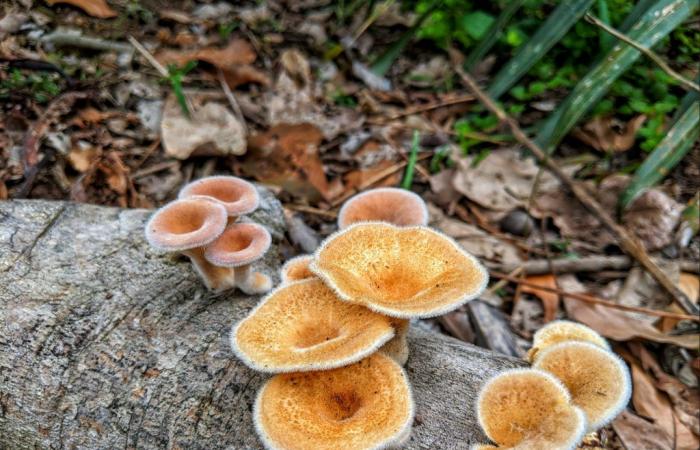Despite myths about mushrooms as hallucinogens or pathogens, the Fungi Kingdom is vast and crucial to life on Earth. There are up to 155 thousand known species, although it is estimated that there could be 2.5 million. Two essential types are saprophytes and mycorrhizals, which play vital roles in the decomposition of organic matter and symbiosis with plants. Dr. César Marín, researcher at the Research and Innovation Center for Climate Change (CiiCC) of the Santo Tomás University, explains its importance and combats misinformation about these organisms
06/25/2024
By Paula Campos
There are various myths related to mushrooms due to their hallucinogenic nature as well as pathogenic and harmful to humans, however, the Fungi Kingdom is broad and heterogeneous: currently there are up to 155 thousand species on the planet that are characterized by their diversity, although has calculated that there could be 2.5 million species. Now, there are two types of fungi without which the planet and life as we know it would not exist: saprophytes and mycorrhizal fungi.
Importance of Mushrooms
According to him Dr. César Marín, Full Professor and Researcher at the Research and Innovation Center for Climate Change (CiiCC) of the Santo Tomás University, These types of fungi “helped plants colonize the earth and without them, the atmosphere as we know it would not exist. “More than 85% of all terrestrial plants depend on and are associated with these fungi in their roots, including the vast majority of crops.”
Saprophytic fungi
Specifically, saprophytic fungi degrade and recycle organic matter, that is, everything that falls to the ground, dies and decomposes such as leaves, wood and dead animals. “Without this decomposition process, the planet we see today would not exist. This recycling of nutrients is what sustains forests, grasslands, crops. What’s more, there was a geological era, the Carboniferous, when these decomposing organisms did not exist and fallen logs accumulated for several meters,” explains Dr. Marín.
mycorrhizal fungi
The second type of fungus of vital importance are mycorrhizal fungi, which exist practically at the same time as the first fossils of land plants and are characterized by being “a symbiosis where there is an exchange of carbon, from the plant to the fungus and of nutrients such as phosphorus and nitrogen; and protection against pathogens or metals, by the fungus towards the plant,” says Marín. Specifically, this type of organism is being researched internationally to increase crop production and growth.
Main myths
In addition to the myths related to the hallucinogenic and pathogenic nature of plants and animals, the Dr. Marin He mentions the misinformation that exists about other types of fungi, such as yeast. “We wrote an article in which we reviewed the hundreds of documents that make up the public school curriculum in Chile, and we found that fungi are mentioned only nine times while plants and animals are mentioned hundreds of times,” he explains.
Regarding this study, the academic comments that of the nine mentions, eight correspond to pathogenic fungi and only one to yeasts. However, most fungi are saprophytes and their job is to decompose organic matter, an aspect that has been studied in academia in recent years in order to demystify their function. “Fungi are fundamental for the functioning of the planet, as or more important than pollinating organisms such as bees, which in the popular imagination do not have the same negative view as fungi,” he adds.






